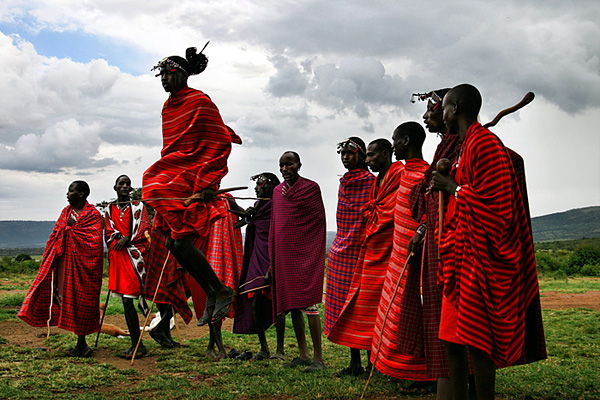Music and Dance...
Maasai music traditionally consists of rhythms provided by a chorus of vocalists singing harmonies while a song leader, or olaranyani, sings the melody. The olaranyani is usually the singer who can best sing that song, although several individuals may lead a song. The olaranyani begins by singing a line or title (namba) of a song. The group will respond with one unanimous call in acknowledgment, and the olaranyani will sing a verse over the group's rhythmic throat singing. Each song has its specific namba structure based on call and response. Common rhythms are variations of 5/4, 6/4 and 3/4 time signatures. Lyrics follow a typical theme and are often repeated verbatim over time. Neck movements accompany singing. When breathing out the head is leaned forward. The head is tilted back for an inward breath. Overall the effect is one of polyphonic syncopation

Eunoto, the coming of age ceremony of the warrior, can involve ten or more days of singing, dancing and ritual. The warriors of the Il-Oodokilani perform a kind of march-past as well as the adumu, or aigus, sometimes referred as “the jumping dance” by non-Maasai. (both adumu and aigus are Maa verbs meaning "to jump" with adumu meaning "To jump up and down in a dance" Warriors are well known for, and often photographed during, this competitive jumping. A circle is formed by the warriors, and one or two at a time will enter the center to begin jumping while maintaining a narrow posture, never letting their heels touch the ground. Members of the group may raise the pitch of their voices based on the height of the jump.

*****
Masai people dancing..
Here I have found some beautiful pictures of Masai people dancing..
here is the actual video of masai people doing their traditional dance....
here is the actual video of masai people doing their traditional dance....
No comments:
Post a Comment